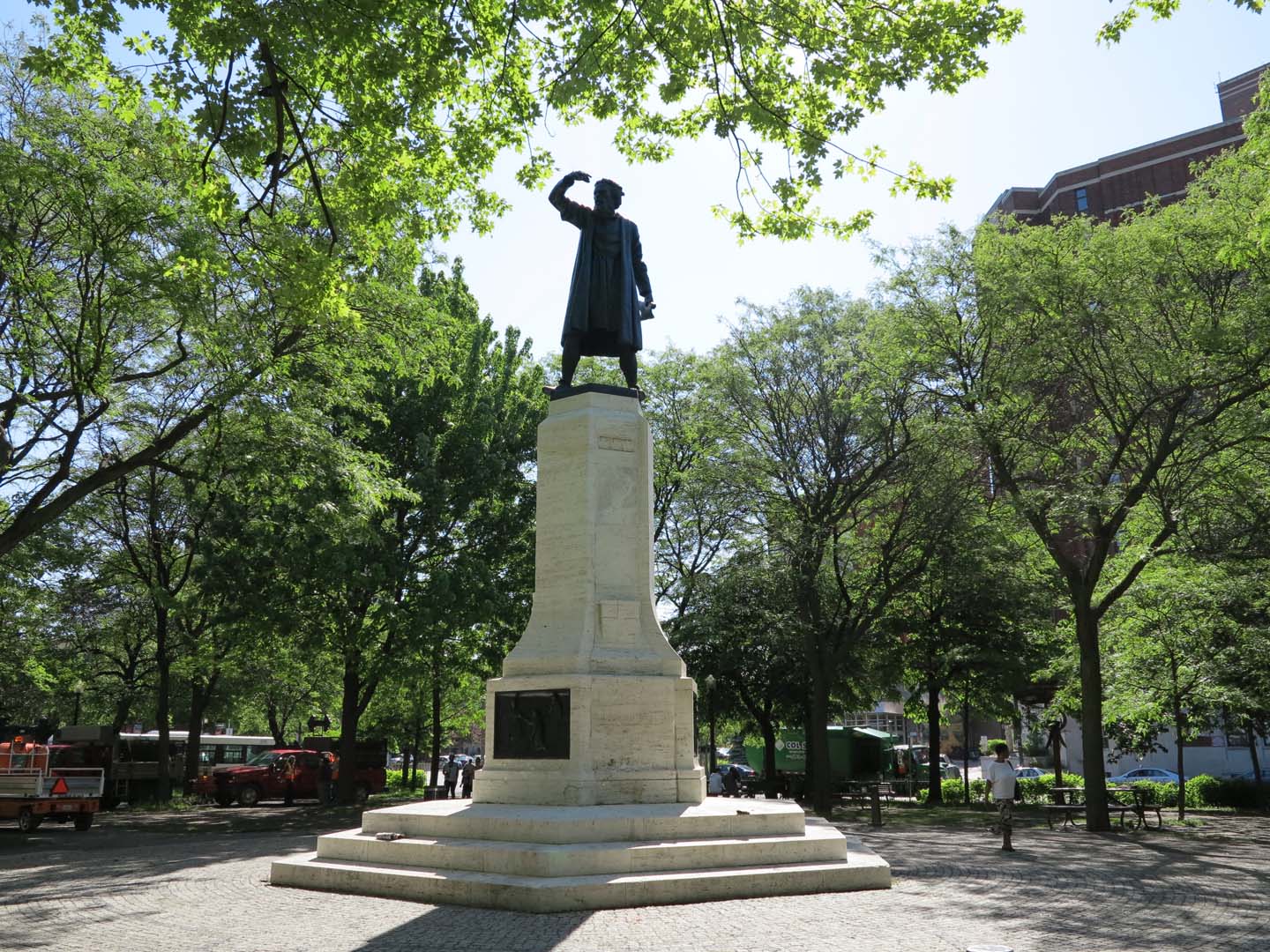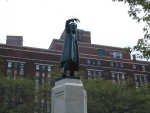Guido Casini
Monument à Giovanni Caboto
1931
Presentation of the artwork
A symbol of the Italian diaspora in Montréal, the monument to John Cabot was intended to solidify relations between Italy and Canada a few years before the Second World War broke out. It commemorates the Genovese navigator and the events surrounding his expedition to North America. At the top of a pedestal arises the figure of Cabot, intensely scrutinizing the horizon and towering over the square baring his name. He holds in his hand the royal authorization that Henry VII of England had just granted him to leave in search of a westward maritime route to India. Bas-reliefs of historical scenes on the stone base complement the sculpture of Cabot, portraying three moments in his voyage (the mission, the departure, and the arrival). Three escutcheons also adorn the base: the coat of arms of Henry VII, featuring leopards and English and French lilies; a coat of arms featuring a winged lion – the emblem of St. Mark, the patron of Venice – whose left paw rests on an open book bearing the inscription Pax tibi Marce evangelista meus (Peace to you, Mark, my evangelist); and the coat of arms of Cabot, featuring a shield adorned with a Greek cross. Associated events
Giovanni Caboto, also known as John Cabot, was a Venetian explorer and navigator born around 1450. Genovese by birth, he became a Venetian citizen in 1476, and later became an English citizen. Cabot failed on his first attempt to reach India due to disputes among his crew. Despite this failure, he was, it seems, the first to plant the flags of England and Venice on the northeast coast of North America. From the port of Bristol, in southern England, Cabot and his sons left to conquer the Northwest Passage “to Asia” on board the Matthew. They reached the north shore of what became the Canadian province of Newfoundland and Labrador on 24 June 1497. Cabot was lost at sea in 1498.
Guido Casini
Guido Casini was born in Castelfiorentino, Italy, in 1892 and immigrated to Montréal in 1956. He brought with him an extensive education in fine arts, including training in the tradition of commemorative monuments from the best Italian schools: the School of Decorative and Industrial Arts in Florence, from 1905 to 1910, and the Royal Institute of Fine Arts in Florence, Rome, and Venice, from 1910 to 1915. Casini had produced a number of private, religious, and public commissions before being commissioned to produce the monument to John Cabot. His monument to the Venetian navigator reflects the Florentine artistic heritage of the Quattrocento (as the fifteenth century was known in Italy), a period when art stripped of all spiritual influence flourished.






